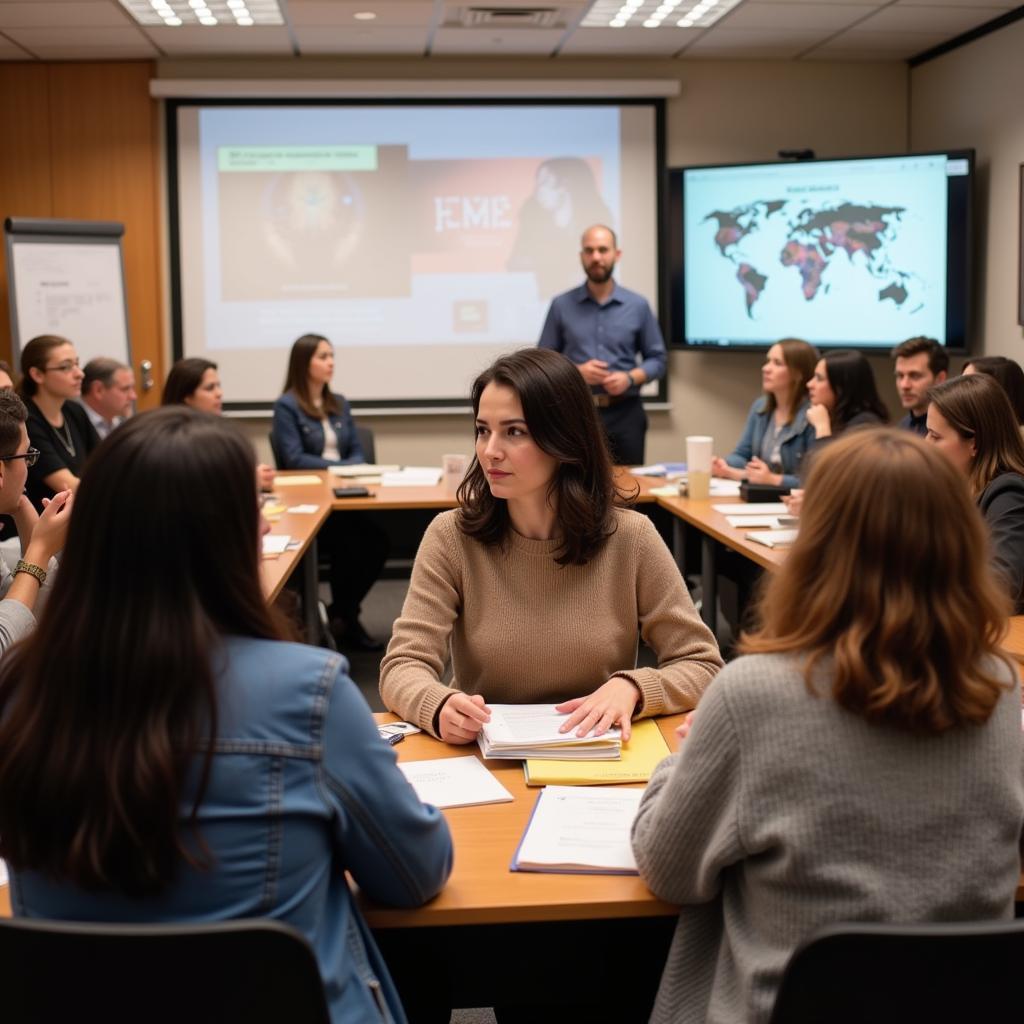The term “blue-white society” might initially evoke images of serene landscapes or perhaps a utopian vision of harmony. However, as we delve deeper, it becomes clear that this seemingly simple phrase can encompass a spectrum of meanings and interpretations, particularly when viewed through the lens of peacebuilding in our increasingly interconnected world.
While “blue-white society” lacks a universally accepted definition, its components – “blue” and “white” – offer a starting point for exploration. These colors, often associated with peace and unity, can also represent different entities, perspectives, or even conflicting ideologies within a society. Understanding these nuances is crucial for fostering dialogue and promoting peace in a world often characterized by division.
Deconstructing “Blue-White Society”: A Multifaceted Exploration
One way to approach the concept of a “blue-white society” is to consider the potential interpretations of its individual components:
- Blue: Often associated with calmness, stability, and trustworthiness, “blue” can represent established systems, traditional values, or dominant power structures within a society.
- White: Symbolic of purity, innocence, and new beginnings, “white” can represent emerging perspectives, marginalized voices, or calls for change and reform.
 Blue and White Dialogue
Blue and White Dialogue
Bridging Divides: The Role of Dialogue and Empathy
Within the context of “blue-white society,” peacebuilding requires acknowledging and addressing the potential power imbalances and conflicting narratives that can arise from these different perspectives. This is where dialogue and empathy become essential tools for fostering understanding and building bridges between seemingly disparate groups.
- Creating Space for Open and Honest Communication: Establishing platforms where individuals from diverse backgrounds and viewpoints can engage in respectful and constructive dialogue is crucial. This requires active listening, a willingness to understand perspectives different from our own, and a commitment to finding common ground.
- Empathy as a Driving Force for Peace: Cultivating empathy allows us to step outside our own experiences and connect with the lived realities of others. By understanding the hopes, fears, and motivations of those who may seem different, we can begin to break down barriers and build relationships grounded in compassion and respect.
 Diverse Group Participating in a Peace-Building Workshop
Diverse Group Participating in a Peace-Building Workshop
Embracing Complexity: Moving Beyond Binary Thinking
It’s important to acknowledge that the concept of a “blue-white society” is not about creating a homogenous or simplistic view of the world. Rather, it’s about recognizing the inherent complexity of human societies and the need for nuanced approaches to peacebuilding.
Moving beyond binary thinking and embracing the full spectrum of human experiences and perspectives is crucial for creating a more just and peaceful world. This requires a willingness to challenge our own biases, engage with uncomfortable truths, and work collaboratively towards solutions that benefit all members of society.
Conclusion: A Shared Vision for a More Peaceful Future
Ultimately, the journey towards peace in a “blue-white society” – or any society for that matter – is an ongoing process that requires commitment, collaboration, and a shared vision for a better future. By embracing dialogue, empathy, and a nuanced understanding of the complexities within our communities, we can work together to create a world where peace is not merely an aspiration, but a lived reality.
FAQs about Navigating Peace in a Diverse Society
- What are some practical steps individuals can take to promote peace within their own communities?
- How can we address systemic inequalities and historical injustices as part of the peacebuilding process?
- What role can technology and social media play in either fostering peace or exacerbating conflict in a “blue-white society”?
- How can we support and empower young people to become active agents of peace in their own right?
- What are some examples of successful peacebuilding initiatives from around the world that we can learn from?
For further insights and resources on promoting peace and understanding, explore these related articles on our website:
If you would like to learn more or get involved in our initiatives, please don’t hesitate to contact us. You can reach our 24/7 support team at Phone Number: 02043854663, Email: [email protected], or visit us at our address: Khu 34, Bac Giang, 260000, Vietnam. We are here to support you on your journey towards building a more peaceful world.